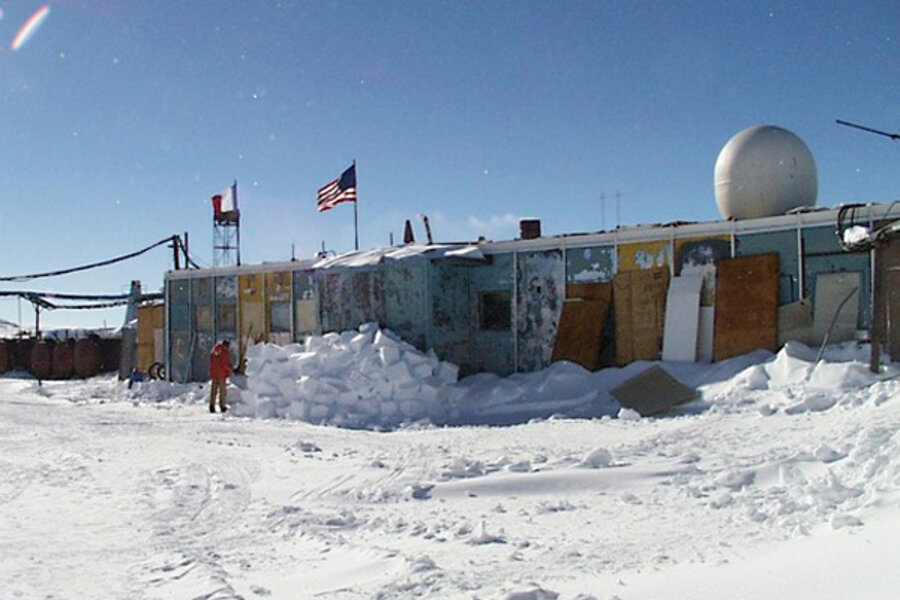'New' bacteria in Antarctic lake actually just contamination, say scientists
Loading...
Late last week, a Russian news outlet reported that scientists at Antarctica's Lake Vostok, buried under miles of ice, said they had found bacteria that appeared to be new to science. Now, the head of that lab has said the signature is actually just contamination, leading outside researchers to say that the Russian team rushed too quickly to announce the possibility of new bacterial life.
Russian news media reported last week that the team had found DNA from a microbe that did not appear in databases and is only 86 percent similar to others on Earth — considered a reliable threshold of new life.
On Monday (March 11), the lab analyzing the finding said it was not new bacteria that generated the signal, but contamination.
"We found certain specimens, although not many. All of them were contaminants," laboratory head Vladimir Korolyov said in a quote attributed in media reports to the Interfax news agency.
The quick backtrack illustrates the danger of bypassing peer review when announcing new results, Peter Doran, an Arctic and Antarctic researcher at the University of Illinois at Chicago, told OurAmazingPlanet.
'You can say anything you want in a press release'
Peer review is the scientific process that all findings must undergo before work is published, generally in the form of a paper in a scientific journal. The research comes under the scrutiny of other scientists in the field and is validated and questioned before anything goes to print. That's not the case in a news report.
For that reason, the scientists who OurAmazingPlanet spoke with said that it was hard for them to discuss why the Russians failed since they do not even know, for example, what contaminates were found in the lab. That information could take weeks or months to surface.
"You can say anything you want in a press release," Doran said. "The peer review literature [by contrast] is very controlled. It needs to be substantiated, and written in clear language."
"I tell my students," he continued, "don't trust anything you read in the popular press. Even if there is a paper, there's often a disconnect between what is in the paper and in the popular press."
Peer review, however, can take years, acknowledged David Pearce, a researcher with the British Antarctic Survey who worked on a similar British effort to drill into buried Lake Ellsworth. (That effort failed and is being subject to a review board. The results should be published around May, at which point the British will decide whether to try again.) [Extreme Antarctica: Amazing Photos of Lake Ellsworth]
Taxpayers are often impatient to find out what is going on, Pearce said, and the press works to fill that need. A balance must be struck between these needs, he added.
"It's important [the public] is kept informed of what's going on, and the interesting things that are coming out," Pearce said. Science, by contrast, requires time and careful thought.
"You do want to find out what's happened to the research money," he added, "but you don't want to say too much too soon."
Sterilization part of best practice
The Russian researchers not only faced challenges concerning announcing their findings, but also scientific challenges in their quest to discover life.
It's still not known what kind of life, if any, lies below the 2 miles (3 kilometers) of ice that sits on top of Lake Vostok. As far as researchers know, the underground freshwater has been lying there untouched for more than a million years.
Confirming that any possible signature of life is not a contaminant is complicated, to say the least.
There's a strict protocol the Americans strive to follow in Antarctica, said Doran, who is familiar with the practices of the U.S. Whillans Ice Stream Subglacial Access Research Drilling project (WISSARD) team that worked this year at Antarctica's Lake Whillans.
Doran could not speak specifically to the Russians, but said the American work demonstrates a good methodology.
In WISSARD's case, it involves sterilizing all the equipment with hydrogen peroxide gel or a similar product, then hermetically sealing them in bags for shipment. Scientists on-site sterilize the water in the drill system through several steps that include filters and life-killing ultraviolet radiation.
As the drill progresses through the ice, the scientists monitor cell counts to make sure there are no unexplained jumps.
WISSARD recently announced life findings of its own, but Doran was equally skeptical of that until a paper comes out confirming the work. [Gallery: Finding Life in a Buried Antarctic Lake]
To the WISSARD announcement, Doran said, "I understand how it happened. There are embedded reporters in the field with them. They are sitting around the dinner table together, and drinking Scotch together, and the reporters are right there [when scientists say] 'Our cell counts are way up when we've gone into the lake water.'"
"Of course that gets reported, but without the peer review literature, it's still a violation of how the standard things are done," Doran said.
Follow Elizabeth Howell @howellspace. Follow OurAmazingPlanet @OAPlanet, Facebook and Google+.
- Strangest Places Where Life Is Found on Earth
- Antarctica: 100 Years of Exploration (Infographic)
- Extreme Life on Earth: 8 Bizarre Creatures
Copyright 2013 LiveScience, a TechMediaNetwork company. All rights reserved. This material may not be published, broadcast, rewritten or redistributed.







